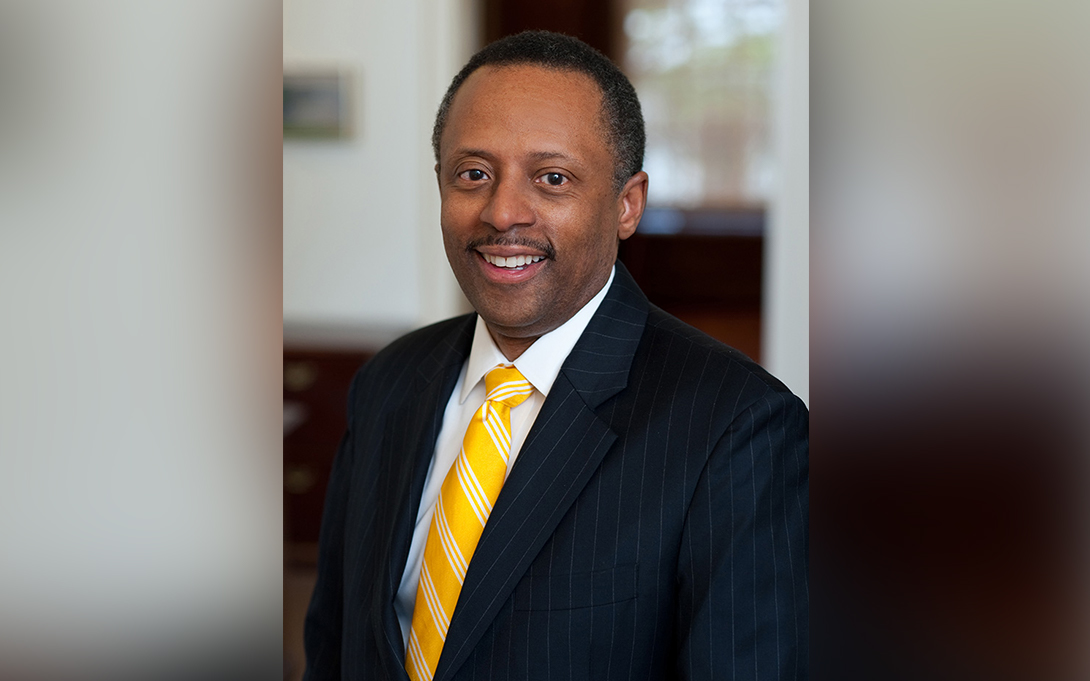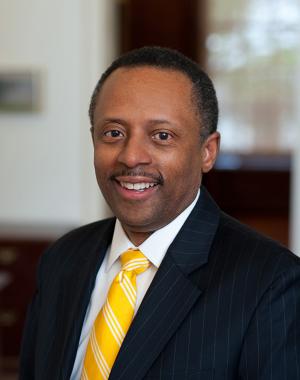
A growing number of universities are working to critically engage with the uncomfortable truths of their institutions’ histories, including entanglements with slavery and racial discrimination.
At the University of Michigan, historians, scholars and community members gathered Feb. 10 at the Michigan League for a panel discussion about how universities should best facilitate large-scale projects that reexamine their pasts.
The discussion was hosted by U-M’s Inclusive History Project and the Eisenberg Institute for Historical Studies. The Inclusive History Project, first announced in June 2022, will spend the next several years studying U-M’s history regarding diversity, equity and inclusion, including questions of race and racism, and broader histories of exclusion and resistance across its three campuses.
In addition to producing new scholarship, research and courses, the project will consider how the university’s inclusive history should be embedded in new forms of institutional storytelling, changes to our physical environment, and new institutional programs and policies.
“This is not an odd or anomalous thing for a university to do,” said panelist James Campbell, the Edgar E. Robinson Professor in U.S. History at Stanford University. “Doing this kind of work is in the finest tradition of what a university is.”
Campbell previously chaired Brown University’s Steering Committee on Slavery and Justice, which published a landmark report in 2006 that publicly documented Brown’s complex history with the transatlantic slave trade and its legacies of anti-Black racism, racial domination and injustice.
Inclusive History Project co-chair Elizabeth Cole, a University Diversity and Social Transformation Professor and director of the National Center for Institutional Diversity, said the project is engaged in a year of framing and designing a multiyear plan. She noted that the symposium offered a critical opportunity to learn from other institutions that have undertaken similar projects.
Campbell was joined by scholars who have led efforts at other universities:
- Kacie Lucchini Butcher, public history project director, University of Wisconsin-Madison.
- Evelynn Hammonds, Barbara Gutmann Rosenkrantz Professor of the History of Science and professor of African and African American studies, and of social and behavioral sciences, Harvard University; and Audre Lorde Visiting Professor of Queer Studies at Spelman College.
- Kirt von Daacke, assistant dean and professor of history, University of Virginia.
The discussion was moderated by the two co-chairs of the Inclusive History Project:
- Cole, who is also a professor of psychology, of women’s and gender studies, and of Afroamerican and African studies in LSA.
- Earl Lewis, Thomas C. Holt Distinguished University Professor of History, Afroamerican and African Studies, and Public Policy; professor of history and of Afroamerican and African studies in LSA; professor of public policy in the Gerald R. Ford School of Public Policy; and director and founder of the Center for Social Solutions.
Panelists indicated that to invoke meaningful cultural change on campus, the Inclusive History Project and efforts like it will require a long-term commitment with resources, an educational component — particularly for students — and continuous community engagement.
In 2019, the University of Wisconsin-Madison launched a three-year Public History Project that culminated with an exhibit, “Sifting & Reckoning: UW-Madison’s History of Exclusion and Resistance.” The exhibit illuminated the experiences of marginalized students throughout the school’s history and explored their struggles for equality in social organizations, housing and athletics.
Butcher said an expiration date initially associated with the project at times made it difficult for her team to cultivate campus and community partnerships, but that it hyper-focused them on getting as many stories of the university’s history as possible into the final exhibit.
“I made my goal to make this work so essential to the university and to the faculty, staff and students,” Butcher said about her efforts to get the project extended.
Last month, UW-Madison announced it will create the Rebecca M. Blank Center for Campus History to expand upon the project and educate people about the campus’ difficult history. The center is named for Blank, a UW-Madison chancellor emerita, because she commissioned the project. Blank also is a former dean of the Ford School.
“We have the potential to do so much more,” Butcher said. “We’re eager to hear from the campus community about how the new center can best serve the university.”
Hammonds, who served on Harvard’s committee on the legacy of slavery, noted that U-M’s Inclusive History Project should be innovative in its approach to connecting with and educating the campus community.
“You have to be intentional about sustaining community engagement,” she said. “Not repeating the same things or programs over and over again but making the project a living thing.”
Harvard released its report last year, detailing the school’s involvement in the U.S. slave trade, including faculty and staff members owning slaves. As a result of the report, a $100 million endowment was created to implement its recommendations, including resources for current use and to sustain the work in perpetuity.
At the University of Virginia, building an actual memorial was one outcome of the university’s recognition of its relationship with slavery.
“It’s easy for a committee to produce a report,” von Daacke said. “Everyone pats themselves on the back and then copies of the report gather dust in people’s offices.
“We looked to make changes to the built landscape so that the only stories you received when you arrived (on campus) weren’t just about (founder) Thomas Jefferson. Other stories needed to be obvious.”
UVA began addressing the university’s past in 2013 when a commission was formed to explore the institution’s relationship with slavery. In 2020, UVA completed the Memorial to Enslaved Laborers.
The memorial is an open-ended circular wall of granite, 80 feet in diameter, that is prominently located along a well-traveled corridor of campus. Inscribed on the inner wall of the structure are the names of 973 enslaved people known to have built and toiled at the university.
Another outgrowth of UVA’s work was the creation of Universities Studying Slavery, a consortium of more than 90 institutions of higher learning in the United States, Canada, Colombia, Scotland, Ireland and England.
Von Daacke said the schools are focused on sharing best practices and guiding principles as they engage in truth-telling educational projects.
In concluding the Feb. 10 program, Lewis noted that the Inclusive History Project is just beginning a multiyear endeavor that will require collective effort and community engagement.
He offered a final reminder that these institutional history projects, which also consider questions of repair and reparations for the historical harms they study and document, are worth doing.
This article was written by Lauren Love, U-M Public Affairs
